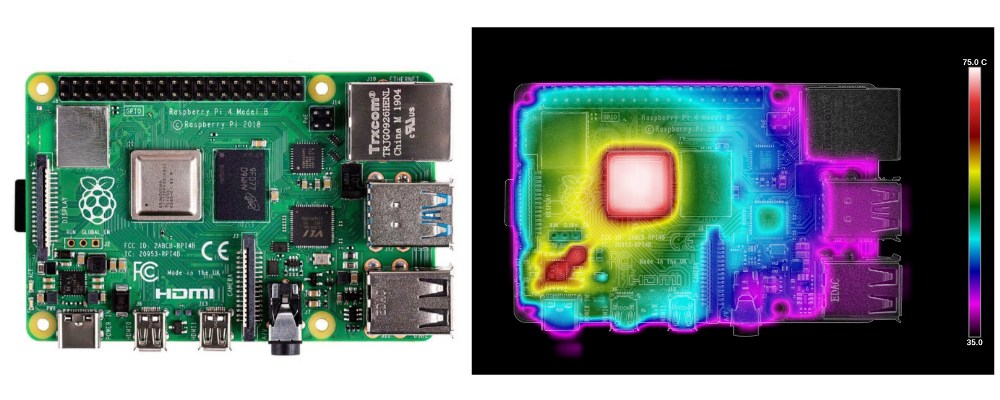Learn how Raspberry Pi 4's October 2019 firmware update builds on previous updates and improves performance even more.
When the Raspberry Pi 4 was unexpectedly announced and released back in June of this year, it was met with a lot of excitement. However, as the board made its way into the hands of eager users, a few, ahem, quirks were also discovered.
Raspberry Pi 4 Issues
It started with a bit of grumbling in the comment section of the original announcement about the lack of more commonly-used ports. While the introduction of USB 3.0 and micro HDMI ports to Raspberry Pi hardware is certainly exciting, they also require new cables to use, meaning more money spent for new users. Arguably, you can just use the two USB 2.0 ports or a USB 2.0 cable with USB 3.0 ports, but then you miss out on the speed!
Then came a bigger problem of powering the SBC. With the Raspberry Pi 3, there were a variety of (unofficial) ways to power your board — old cell phone chargers, for instance. With Pi 4, a type-C-compliant charger must be used in order to get the Pi 4 to work.
These problems are relatively minor and workarounds and compromises were quickly discovered. However, one point of contention felt much more serious than the others: the Pi 4 ran hot — alarmingly hot when compared to its predecessor. At launch, even the idle temperatures of the Pi 4 could be seen in thermal images running too hot for comfort and were recorded drawing 2.89W idling on Raspbian.
The Raspberry Pi Foundation recognized the issue and has consistently worked on firmware updates to cool both idle and load temperatures since and, according to their post Thermal Testing Raspberry Pi 4, have taken idle power down half a watt and full load power down almost one full watt.
Why Does the Pi 4 Run Hot?
With a more powerful CPU and GPU, more memory (1GB, 2GB, or 4GB RAM options), and USB 3.0 running speeds, you can see how many of the features that make the Raspberry Pi 4 so attractive contribute to its toasty run temps. After all, something needs to power that impressive Broadcom BCM2711 SoC with a 1.5 GHz 64-bit quad-core ARM Cortex-A72 processor with 1MB shared L2 cache, right?
Let’s take a look at the firmware updates and see how they helped.
Raspberry Pi 4 Firmware Updates
Since the launch, three notable firmware updates happened:
- VLI: This update allows the two USB 3.0 ports to run cooler.
- VLI-SDRAM: This update built on the VLI update while also getting the LPDDR4 SDRAM to run cooler.
- VLI, SDRAM, Clocking, and Load-Step Firmware: Again building on previous updates, this latest update targeted the BCM2711B0 SoC clock-speed in response to demand and temperature.
With each firmware update, the boards respond by running cooler and more efficiently. MagPi, Raspberry Pi’s official magazine, published thermal images of the Pi 4 both in idle and load phases with each update. There is a stark difference in temperatures, especially those visible while idle.
Thermal imaging of the Pi 4 idling at launch (left) and after the latest firmware update (right).
Thermal imaging of the Pi 4 loading at launch (left) and after the latest firmware update (right).
Additional thermal images and thermal throttling graphs of the board’s temperature progression after each of the three major firmware updates can be found in Raspberry Pi’s blog post. The post also explains how the tests were conducted.
How to Update Raspberry Pi 4
It’s easy to check whether your Raspberry Pi 4 is utilizing the latest and greatest versions of your programs. Open a terminal window and start by checking your system’s package list:
From there, you can upgrade your installed packages:
Note: Raspberry Pi recommends full-upgrade to pick up all dependency changes.
Beta Firmware in the Works
Even with these firmware updates, Raspberry Pi is currently working on a firmware overhaul. For now, this new firmware exists under the tantalizing term “beta firmware.” Thermal images at idle and load were taken while the Pi 4 ran the beta firmware.
Thermal imaging of the Pi 4 running the beta firmware at idle (left) and load (right).
While the test load temperatures between the beta and the latest update are close, there looks to be a significant change in idle temperature.
Other Ways to Keep Raspberry Pi 4 Cool
While firmware updates are essential, there are more ways to keep the Raspberry Pi 4 from overheating:
- Add a heatsink to your board. It’s a cheap, easy way to drop the temperature.
- If your board is in an enclosure, consider using a fan. Some enclosures even come with built-in fans.
- As suggested by Alex Bate of Raspberry Pi, set your board up on its side so air can reach both sides of the board.
Combining external cooling options with firmware updates is the best way to make sure your Pi 4 runs at a safe temperature to allow for peak performance.






